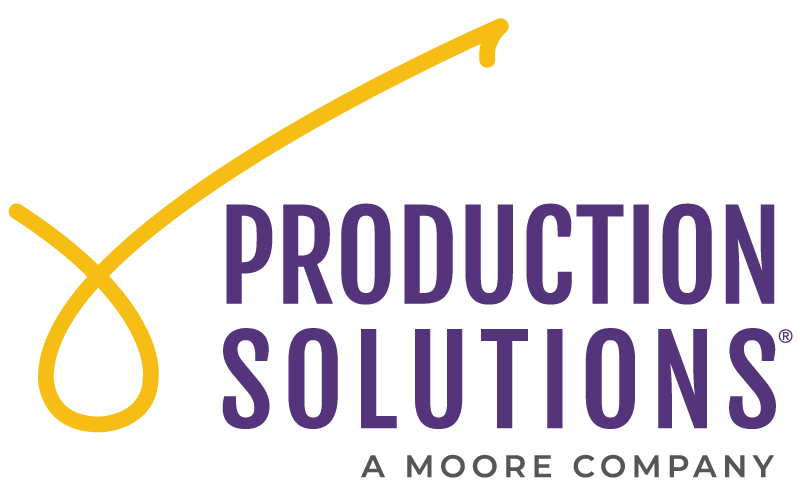Mail is Relevant Now and Into the Future!

Katherine Gouldin
Brand Communications Associate
Joseph Gomez
Business Development DirectorThe world around us speeds up and waits for no one. What was once considered complex processes can now be accomplished with the tap of a finger or a click of a mouse. Because of this, fundraisers ponder serious questions about the future of their organizations, and how they will continue to raise funds (the bulk of which are received through direct mail donations) while digital mediums are on the rise.
While technology and its abilities and scope are at an all-time high, many of us may overlook the role of direct mail and its presence in the fundraising industry that is still incredibly relevant. Direct mail is currently still the #1 fundraising tool we have available today.
Boomers Are Giving
It is becoming impossible to accurately test which medium is most prevalent in fundraising because of the various channels available (mail, online, social media, text messaging, etc.) for donating. One of the main reasons mail is successful is due to donor demographics. According to Future Fundraising Now, “The average donor in the United States is 64 years old and makes 2 charitable gifts a year.”
From the same source, it is recommended to focus on the group between 65-75 years old because “on average they have more wealth than those younger and older than them.” This generation, called Baby Boomers, is at the age of 56 to 74 in 2020. As Boomers generally have more available income to make donations in the first place, fundraisers focus on this audience while still striving to bring in younger donors.
Boomers’ habits are in the mail – they are generally more comfortable conducting transactions through paper rather than electronics. Gen Z (age 5-25 in 2020) and Millennials/Gen Y (age 26-40 in 2020) are raising their hands to help organizations and spend their time, whereas Boomers are donating cash because they have it on hand.
Direct Mail Is Winning
Trends show that direct mail will stay king for the foreseeable future. In Blackbaud’s 2013 report on “The Next Generation of American Giving” which analyzed the charitable habits of each current generation, it was stated, “In small-dollar fundraising driven by direct marketing, direct mail continues to be the workhorse. According to the 2012 Blackbaud Charitable Giving Report, 93 percent of individual donations still come through traditional offline channels. That’s not going to change overnight.”
Future Fundraising Now stated that Gen X (age 41 to 55 in 2020) is not expected to begin outnumbering Boomers until 2033, so Boomers will continue to be the main donors (through the mail) for at least another decade. Millennials are not expected to begin to outnumber Gen Xers as the main donor demographic until 2035.
According to Blackbaud’s 2018 article, most Boomers and Matures (age 75+ in 2020) “report minimal online contact with charities. Email newsletters are the only digital vehicles that seem to have older donors’ attention,” and even if charities catch Boomers’ and Matures’ attention online, that doesn’t mean they will donate online.
Change Is Constant, But Gradual
As the young donors of today get older, we know that eventually, the Gen Xers will become the new primary donor demographic. According to Blackbaud’s 2018 white paper, there is evidence that Boomers may be reaching their peak and will begin to decrease giving. “Boomers’ self-reported, per-capita giving fell slightly, from $1,212 in 2013 to $1,061 today (2018). And the overall percentage of dollars given by Boomers has ticked down slightly, from 43% in 2013 to 41% today (2018).” But this will be very gradual – the question is exactly how long it will take (and how organizations are preparing to test for adapting to this change).
Joe Gomez, a Production Solutions Business Development Director speaks about the trends, “The progression of how technology changes in your lifetime impacts and drives how you interact with it.” So, what will the preferred medium of giving be for Gen Xers?
Evidence shows that direct mail is likely to prevail in future generations. Some direct mail advocates argue that the mail won’t die out, and fundraisers won’t have to adapt to online-only fundraising because younger generations will “age into direct mail responsiveness”, and the trend won’t change (Blackbaud 2013). When Blackbaud published their updated version of this study in 2018, they stated, “debate always rages as to whether giving attitudes and habits are products of the unique outlook of each generation, or whether these attitudes and habits evolve with changing life stages. There’s evidence for both perspectives.”
Looking to the Future
What we do know for sure, is that donor habits are currently in the mail. Save the Children, for example, says about their donors’ giving habits, “68% of our revenue is received offline and 32% of our revenue is received online.”
Fundraisers should continue to focus on Boomers, as they are the source of the donations of today and tomorrow. It is our job to focus on how they want to be reached, through testing innovative mailing formats ideas. Now is the time to start experimenting with what the next generations will want to see in the mail so that the messages they receive from their favorite charities will be impossible for them to resist.
And lastly, it is important to remember that direct mail is still largely relevant today due to its return on investment. According to Blackbaud’s 2018 study, “Every astute fundraiser will note, at this point, that direct mail brings in eight or nine times more money than email each year.” Without mail, the industry would be missing out on interacting with current and prospective donors that continue to feed the donation pool.
Be on the lookout for our next blog in this postal deep-dive series, to learn about how postage is calculated and how you can maximize your cost savings!
About the Author

Katherine Gouldin
Brand Communications Associate
Joseph Gomez
Business Development DirectorJoe, a Business Development Director, has over 40 years in the print and direct mail industry, and his ability to lead by example and to provide opportunities is inspiring. Joe offers a unique and valuable perspective, communicates authentically while practicing a positive and personal approach each day. Joe’s commitment to an impeccable service experience for his clients and his ability to recognize and promote value for both his team and his clients contribute to his greatness and success.Joe has been serving with PS since 2013. Joe is from Bayport, New York and he telecommutes full-time from Maryland. Joe enjoys spending time with his family, going to the beach, watching sports, playing ice hockey and boating.






